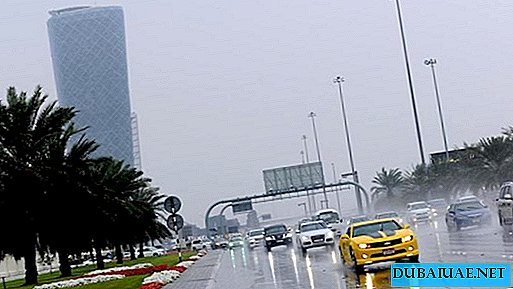
ONE OF THE MOST FAMOUS GALLERISTS AND ART DEALERS OF THE WORLD, LAYLA HELLER, DURING THE FOURTH OF THE CENTURY, BRIDGED CULTURAL BRIDGES BETWEEN EAST AND WEST FROM THE SAME GALLERY IN NEW YORK CITY. NOW LEILA HELLER GALLERY IN DUBAI AREA 14 THOUSAND SQ. FUTOV - THE BIGGEST COMMERCIAL ART SPACE IN THE MIDDLE EAST.
At the end of 2015, the enterprising Iranian decided to take a new height and opened a gallery in Dubai - the second in her biography and the largest in the Middle East, where she receives today all connoisseurs of well-known and new art.
Leila, please tell us about your travels in the world of art.
Leila: I always felt especially warm feelings for art, and over the years they only intensified. I studied art history at Brown University, then I got a master's degree in a joint program from Sotheby's auction house and George Washington University. After that, I moved to New York and opened my first gallery in 1982. I’ve been in business for 35 years, and only now we have moved to another continent - we opened a gallery in Dubai. I continue to work with museums, art institutes, universities and exhibitions, as well as with artists and top curators around the world.
 What was your first major purchase?
What was your first major purchase? Leila: This was the pastel of Edgar Degas, I acquired it in 1985. The work did not go under the hammer at the auction, and I took it to the gallery, where an accidentally visiting visitor from Japan looked at it.
You are called one of the most successful art dealers. What is the secret to success on this path?
Leila: This is a business that requires being truly passionate not only for art, but also for the artists who create it. You must be a person willing to deal with collectors and artists and be sensitive to their aspirations. You also need to have a good understanding of how the gallery works, to understand how works of art are sold, and first of all, the fact that creating museum-level works and even catalogs is a very expensive process.
 Why did you move from New York to Dubai, to Alserkal Avenue?
Why did you move from New York to Dubai, to Alserkal Avenue? Leila: Over the past ten years, I often came to the UAE, primarily to the Abu Dhabi Art and Art Dubai exhibitions, where I watched how the cultural component in Dubai is growing rapidly. This city has already established itself as an international center of culture and art, standing at the crossroads of the East and West. And I am very glad to take part in this art process.
For a long time I had plans to open a gallery in Dubai, but I could not find a suitable place that would correspond to the level of galleries in New York, Paris and London. When I contacted the Alserkal group and got acquainted with their expansion plans, I realized: the place was found. A place for a large gallery, with ceilings above three meters, with sufficient area for large-scale installations. And the place itself is amazing - we are surrounded by other famous galleries, studios and cultural institutions.
 How do you see the Middle East's art needs? Do you plan to bring work from New York to Dubai, or will Arab artists also have the opportunity to exhibit in the United States?
How do you see the Middle East's art needs? Do you plan to bring work from New York to Dubai, or will Arab artists also have the opportunity to exhibit in the United States? Leila: The collectors in New York with whom we work represent all corners of the world, this is a very international group - each of them has its own taste. At the same time, they collect works not only from Western artists, but also from Middle Eastern ones. Therefore, in New York, we represent artists and works from the Middle East and North Africa region. In Dubai, we will not only exhibit Arab artists - we will bring here masters of international art, including those who have never previously been exhibited in the region.
ATHave you met the local collectors?
Leila: The tradition of collecting here is only in its infancy, but I already see people eager to replenish their collections. They are well educated, have a great taste. And by the way, many of them are interested not only in Middle Eastern artists, but also in international ones, with whom they are getting closer and closer.
And what about your own preferences in art?
Leila: I love contemporary art, including Andy Warhol, Jean-Michel Basquiat, Pete Mondrian, Ilya and Emilia Kabakov, Louise Bourgeois and many others. Of course, I really love and support all the artists whom I represent myself.


In addition to the exhibitions themselves, are you planning to educate the Dubai public? Organize workshops for them, meetings with artists?
Leila: The educational program is one of the key aspects of our gallery in Dubai. We already hold panel discussions, lectures and other events - both in the framework of fairs and in the framework of our own exhibitions, which attract many visitors. For example, Michelangelo Pistoletto staged a performance in anticipation of the opening of his exhibition in Dubai. Most recently, we held a discussion with the participation of Iranian artist Afruz Amigi - it accompanied the opening of his personal exhibition. The artist Gada Amir met twice with the public - in Dubai and Abu Dhabi.
ATYou said that you work with well-known curators. Are you planning to attract them to create exhibits in the gallery in Dubai?
Leila: Supervised exhibitions were part of our work in New York, and in Dubai we plan to continue this activity. Working with curators opens up unique perspectives on the global art scene and introduces us to new artists. We have invited many famous curators, and in the coming year or two in Dubai you will hear many interesting names.
I noticed you are very optimistic about the development of the art industry in the Middle East?
Leila: I see that the industry is developing, and from a commercial point of view too. See how many new galleries have opened at Alserkal Avenue and the Dubai Design District. It should be noted that the development of non-profit organizations, foundations, museums and the art sector as a whole throughout the region.









